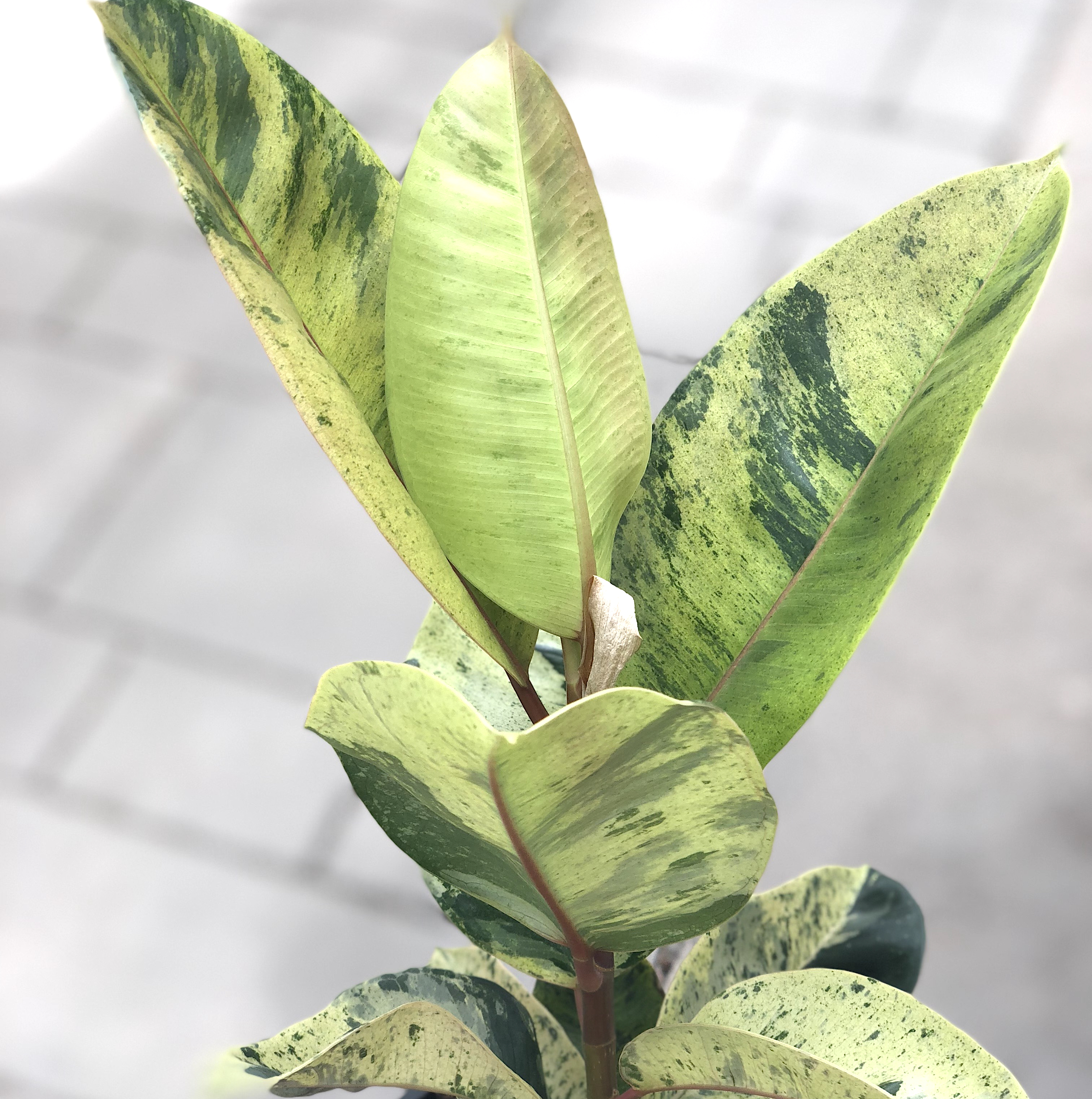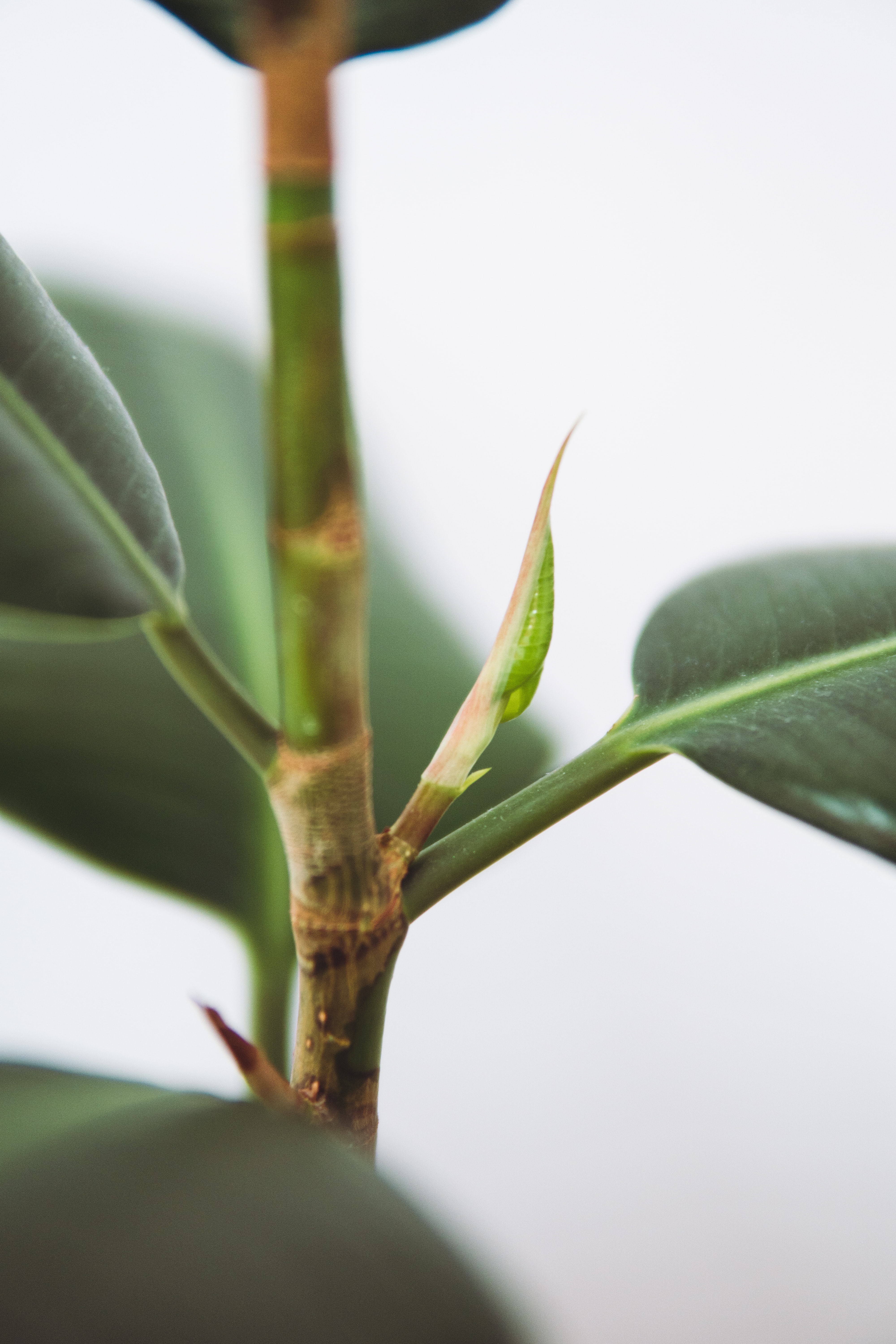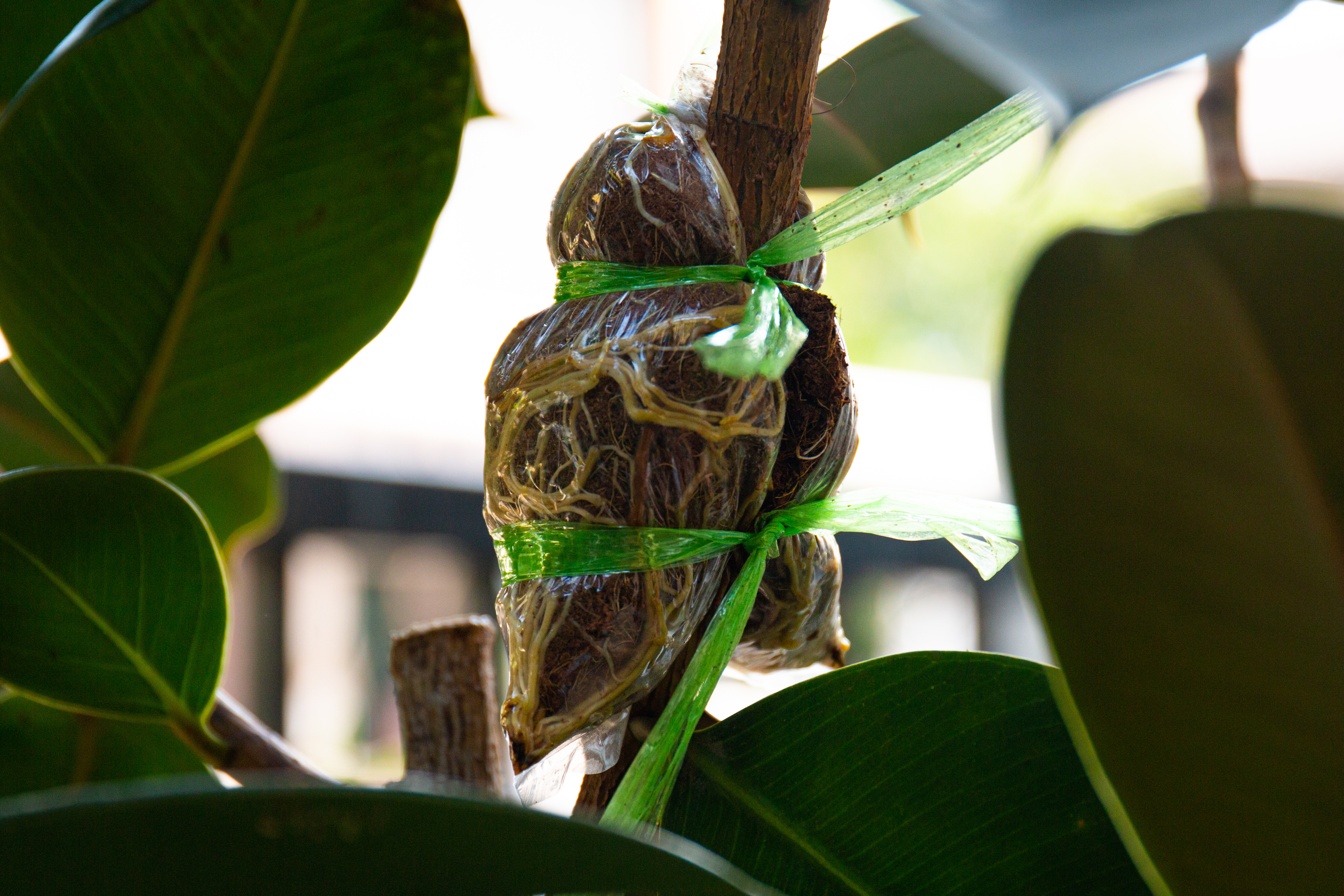Ficus elastica - The rubber plant
This plant's cousin, the famous Ficus lyrata, has been in the spotlight for far too long! Rubber trees are actually easier to care for and come in a wider range of colors and patterns - glossy green, dramatic dark red, pastel pink, or creamy variegated, to mention a few.
If you prefer small-leaved plants, you can take a look at the cultivars 'Petite Tineke' and 'Petite Melany.' They are pastel-colored and a dark red (almost black) colored cultivars with tiny leaves. However, they tend to revert back to their larger leafed selves. If that happens, you can prune it back to where it grows its smaller-sized leaves.
The rubber plant is a beautiful and versatile houseplant that is perfect for any home or office. With its glossy green leaves and sturdy structure, it adds a touch of elegance and serenity to any space.

Care
The Rubber plant prefers plenty of bright, indirect light, but can tolerate both full sun and low light conditions as well, if allowed to slowly get accustomed to it first. You don't want to risk scorching your tree. However, be aware that low light conditions can make your rubber plant less colorful and grow more leggy.
It can be a bit finicky about watering, so it's important to let the top soil dry out before watering again. In addition, it's a good idea to keep the leaves dust-free to allow the plant to photosynthesize efficiently. They are notorious dust collectors, but fortunately their glossy leaves are very easy to wash off with a damp cloth. It's even quite satisfying to bring back the shine on its leaves.
When it comes to potting, the rubber plant prefers to be slightly root-bound. This means it should be repotted when you see roots coming out of the bottom of the pot. In this case, you can either move the plant to a slightly larger pot or cut back the roots a bit.

The previously rare cultivar, ‘Schrijveriana’, has striking lime mottled variegation and is now much more widely available in the market. - A must have for all plant collectors!
Producing and maintaining the crown of your tree
Apical dominance is the botanical term for when your plant is focusing on growing its main stem and leaving all other buds and nodes dormant, except for leaves. This explains why this maintenance step is necessary to maintain and shape your plant.
Your plant is mainly focusing on growing upwards or towards the light. Not until the tip of the branch or stem is damaged or has reached its full potential, will it start waking up the dormant buds hiding inside the nodes. By pruning the tip of the stem, you will force your plant into growing side branches. The upcoming side shoots will also continue growing until their tips are damaged or pruned. So, by continually pruning back the tips slightly on each side branch, you will eventually form a crown.
However, you should pause the pruning during the darker seasons of the year. It's better to wait until a more favorable growing season arrives to avoid getting etiolated and leggy new growth on your tree.
- One thing to keep in mind is that the rubber plant produces a latex sap that can be toxic if ingested but also irritating if it comes in contact with your skin or your eyes. When your Rubber plant is pruned, it will start to bleed this sap. To prevent this, you can spray the open wound with water to stop it from bleeding. It's also a good idea to wear gloves to protect your skin.

Propagation
Apart from being easy to grow, rubber plants are also easy to propagate once they get too big. There are a few different ways to propagate your Rubber plant.
Here are the steps to propagate a ficus by using cuttings
Choose a healthy stem on the ficus that is at least 6 inches long and has at least two or three leaves.
Using a sharp, clean pair of scissors or a knife, make a clean cut just below a leaf node (the point on the stem where leaves or branches grow).
Remove the leaves from the lower half of the cutting, leaving only the leaves at the top. - If the leaves are very big you can cut of half of the leaf. Optional: Dip the bottom of the cutting in rooting hormone powder or gel to promote root growth.
Plant or place your cutting in water, semi-hydro or directly in a container filled with a well-draining potting mix.
Place it in a warm, bright location, but out of direct sunlight. And if you have it in soil: Water the cutting well.
Cover the cutting with a plastic bag or a plastic container to create a humid environment.
Check the cutting regularly to ensure the soil stays moist and the leaves are not yellowing.
When the cutting has developed roots and new growth, it can be transplanted into a larger container or into the ground.
To propagate a ficus using air layering
Air layering is another method of propagating in which a section of stem is wounded and then covered with a rooting medium, such as sphagnum moss, which is then wrapped in plastic to create a humid environment. This encourages roots to form on the wounded stem, after which the newly rooted stem can be cut from the parent plant and potted as a separate plant. This method can be used for a number of different plants. Including Monsteras and Philodendrons.
Choose a stem on the ficus that is at least 1/2 inch in diameter and has at least one leaf node (a point on the stem where leaves or branches grow).
Use a sharp knife or pruning shears to make a shallow cut in the stem, about 1 inch long and 1/4 inch deep, at the chosen leaf node. Optional: Dust the cut with rooting hormone powder to promote root growth.
Wrap the cut area with a ball of moist sphagnum moss, making sure to completely cover the cut and the leaf node.
Secure the moss in place with plastic wrap or aluminum foil, making sure to seal the edges well to create a humid environment.
Check the moss regularly to ensure that it stays moist. Roots should begin to form in 4-6 weeks.
Once roots have formed, carefully cut the stem below the roots and pot the new plant in a container filled with potting mix.
